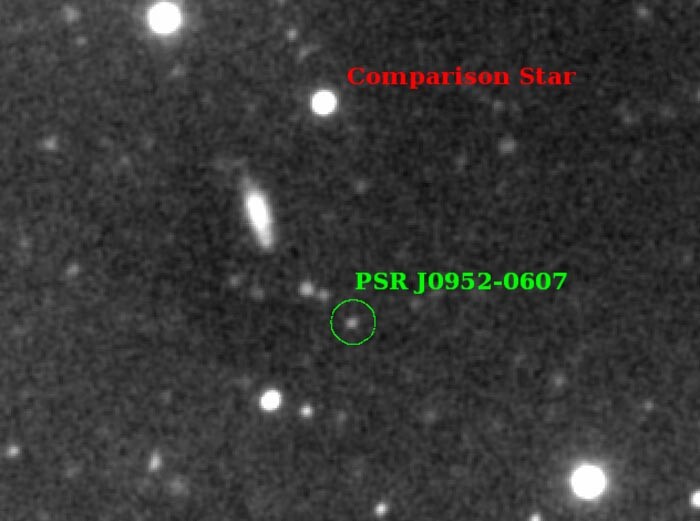The heaviest pulsar yet found

W. M. Keck Observatory, Roger W. Romani, Alex Filippenko
The pulsar known as PSR J0952-0607 spins at 707 Hz, a rate that makes it the fastest-spinning neutron star in the disk of the Milky Way. Discovered in 2017 and known as a “black widow,” the pulsar has nearly consumed its lower-mass companion star. In the process, it has grown into the heaviest neutron star yet found. Researchers led by Roger Romani
According to the team’s analysis, if the neutron star began with a typical pulsar’s birth mass, nearly 1 solar mass from the companion has already been accreted onto it. Eventually, the pulsar’s luminosity and heat may completely evaporate its companion. And yet, as shown in the figure, the binary system is still visible enough to measure. The researchers estimate the companion’s mass at about 20 times the mass of Jupiter and its orbit as tidally locked to the pulsar. The pulsar-facing side is heated to a temperature of about 6200 K, just bright enough to see with Keck.
Romani and his colleagues turned the telescope on the pulsar six times in the past four years. To observe the binary each time, they used the Low Resolution Imaging Spectrometer in 15-minute bites to capture the companion star at specific positions in its 6.4-hour orbit about the pulsar. After comparing the observed spectra with those of similar sunlike stars, they were able to calculate the orbital velocity of the companion and hence the mass of the pulsar. Judging by theory, Romani and his team think that the pulsar may be as heavy as any can be before collapsing into a black hole and disappearing behind the event horizon. The center of the star thus contains the densest matter accessible to observations in our universe. Such a large mass places the most severe constraints on the dense-matter equation of state. (R. W. Romani et al., Astrophys. J. Lett. 934, L18, 2022